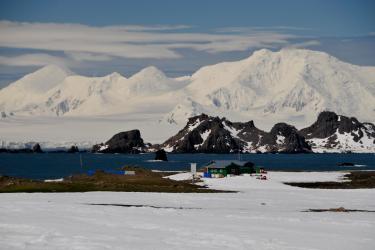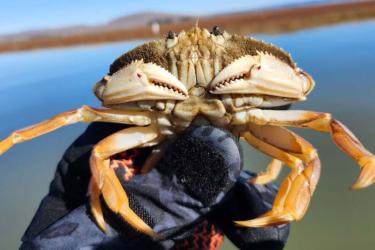As the start of the 2020 sablefish primary fishery approaches, we wanted to remind you of regulations that affect you this fishing season.
The sablefish primary fishery for limited entry, fixed gear, sablefish-endorsed vessels off Washington, Oregon, and California (north of 36° N. lat.) opens at 12 noon Pacific time on April 1. You are required to submit a declaration report prior to departing on a trip with a change in fishery status, see § 660.13(d) of the Pacific Coast groundfish regulations for more information. You can submit a declaration report by calling the Groundfish Declaration Line phone at (888) 585-5518.
The fishery closes at 12 noon Pacific time on October 31, or closes for an individual vessel when the tier limit for the sablefish endorsed permit(s) registered to the vessel has been reached, whichever is earlier. In the unlikely event that the season must close early, you will be notified by NMFS.
During the primary season, each vessel authorized to participate may take and retain, possess, and land sablefish, up to the tier limit for each of the permits registered for use with that vessel. For more detailed regulations applying to the limited entry fixed gear sablefish primary fishery, see § 660.231.
Cumulative Limits by Tier
The cumulative limits are set by tier; all sablefish endorsed permits carry a designation for either tier 1, tier 2, or tier 3. NMFS publishes annual tier limits in the Pacific Coast groundfish regulations at § 660.231(b)(3)(i).
The 2020 sablefish endorsed permit cumulative limits by tier (in round weight) are as follows:
- Tier 1 at 48,642 lb (22,064 kg),
- Tier 2 at 22,110 lb (10,029 kg), and
- Tier 3 at 12,634 lb (5,731 kg)
Tier limits are in round weight. For dressed weight, divide the round weight amount by 1.6.
Seabird Bycatch Minimization Measures
All vessels greater than or equal to 26 feet length overall that use longline gear in the sablefish primary fishery (as well as all other Federal groundfish fisheries) are now subject to seabird bycatch minimization measures. We published these measures in a final rule on December 11, 2019, and the requirements went into effect on January 10, 2020. These requirements can be found at § 660.21.
All groundfish longline vessels fishing in the exclusive economic zone (3-200 nautical miles offshore) are required to either use streamer lines (also called tori lines or bait savers) or night set (only deploying hooks between one hour after local sunset and one hour before local sunrise) when fishing north of 36° N. latitude.
The final rule and a compliance guide are available here: https://www.fisheries.noaa.gov/action/magnuson-stevens-act-provisions-fisheries-west-coast-states-pacific-coast-groundfish-fishery
We have a limited number of free streamer lines. Please indicate your interest using this link: https://beav.es/ZAa. Otherwise, streamer lines are available through LFS, Inc., and cost around $130 per line. Streamer lines may not be immediately available so we suggest looking into securing a line as soon as possible.
Helpful Reminders
What is my tier limit?
A vessel participating in the primary season will be constrained by the sablefish cumulative limit(s) (also referred to as tier limits) associated with each of the permits registered for use with that vessel. During the primary season, each vessel authorized to participate in that season may take, retain, possess, and land sablefish, up to the tier limit for each of the permits registered for use with that vessel.
What is my tier limit if I have multiple sablefish endorsed permits registered to a single vessel?
If multiple limited entry permits with sablefish endorsements are registered for use with a single vessel, that vessel may land up to the sum total of all of the tiers for those permits, unless the permit is registered to more than one vessel during the primary season. Up to 3 permits may be registered for use with a single vessel during the primary season; thus, a single vessel may not take and retain, possess or land more than 3 primary season sablefish tier limits in any one year. A vessel registered for use with multiple limited entry permits is subject to per vessel limits for species other than sablefish, and to per vessel limits when participating in the daily trip limit fishery for sablefish.
How do I start fishing my sablefish tier limit(s)?
If a vessel is registered for use with a sablefish-endorsed limited entry permit and has declared into the limited entry fixed gear fishery, all sablefish taken after noon local time April 1 count against the tier limit(s) associated with the permit(s) registered for use with that vessel. As a reminder, if you are planning to transfer your sablefish-endorsed permit to another vessel for the start of the fishery, you can file for a transfer well in advance of when you want the transfer to take effect. Transfers to another vessel only take effect at the beginning of January, March, May, July, September, and November (odd-numbered months). You can file transfer paperwork well in advance of these dates without affecting the current registration status of the permit on your vessel. There is no reason to wait until the end of a cumulative limit period to request a transfer for the next cumulative limit period. Please plan ahead.
Can I keep fishing after I reach my sablefish tier limit(s)?
A vessel that is eligible to fish in the sablefish primary season may fish in the daily trip limit (DTL) fishery for sablefish once that vessels' primary season sablefish limit(s) have been landed, or after the close of the primary season, whichever occurs earlier (as described at § 660.231(b)(1). If the vessel continues to fish in the limited entry fixed gear fishery for any part of the remaining fishing year, any subsequent sablefish landings by that vessel will be subject to the restrictions and limits of the limited entry DTL fishery for sablefish. The primary season fishery and the DTL fishery are administered under the same declaration, therefore no change in declarations is required.
Trip limits for the limited entry fixed gear fishery can be found here:
You may also fish with open access gear (e.g. non-trawl gear for which you are not endorsed). If you fish with both your endorsed and open access gear during the same cumulative limit period then you will be subject to crossover provisions found at § 660.60(h)(7). The most common crossover provision that would apply when fishing in a cumulative limit period with both your endorsed gear and a non-endorsed gear is that the most restrictive trip limits (between limited entry fixed gear and open access) cannot be exceeded. Additionally, declaration reports have to be filed with the NMFS Office of Law Enforcement for the gear being used.
Trip limits for the open access fishery can be found here:
Can I retain incidentally caught Pacific halibut?
During the sablefish primary fishery season, vessels authorized to participate in the sablefish primary fishery may retain incidentally caught Pacific halibut, under the following conditions (see § 660.231(b)(3)(iv) for more information).
Vessels must obtain a license from the International Pacific Halibut Commission (applications are available here: https://www.iphc.int/management/fisheries/commercial-fisheries/license-application-information-license-types). Pacific halibut may only be retained when fishing with longline gear north of Pt. Chehalis, WA (46°53.30′ N lat.) and vessels may only possess and land up to the cumulative limit. Currently, the cumulative limit is: 250 pounds (113 kg) dressed weight of Pacific halibut for every 1,000 pounds (454 kg) dressed weight of sablefish landed and up to 2 additional Pacific halibut in excess of the 250-pounds-per-1,000-pound ratio per landing. “Dressed” Pacific halibut in this area means halibut landed eviscerated with their heads on.
The Pacific Fishery Management Council will be considering the cumulative limit at its March meeting and may elect to modify the limit. NMFS will provide additional notification if the limit is changed.



